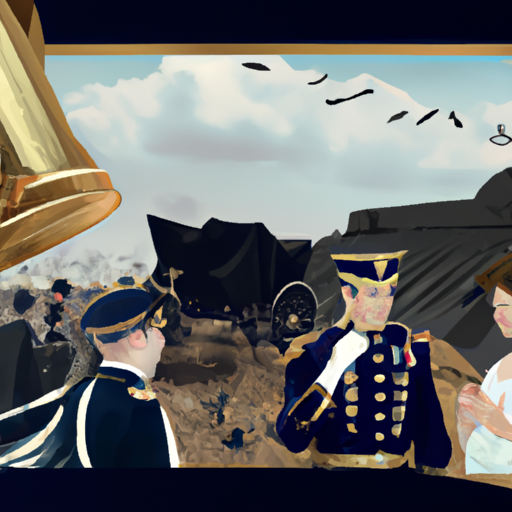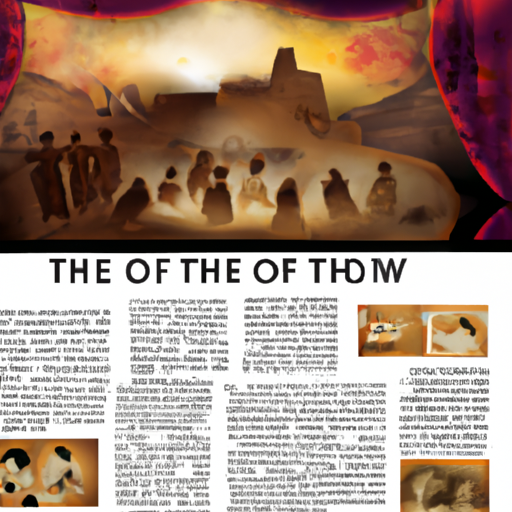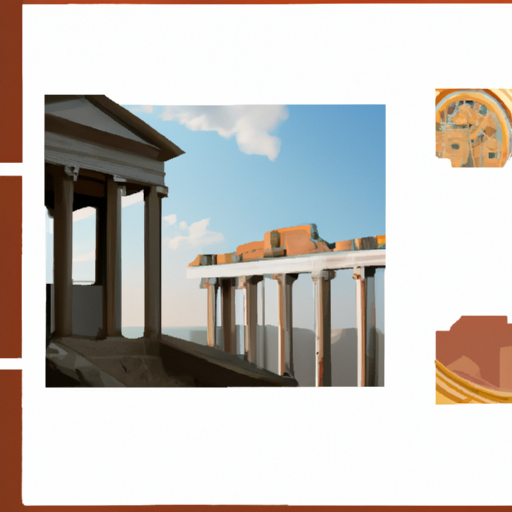History of Victorian Marriage: Understanding the Beliefs of the Era
Unearth the past and explore the impact Victorian views on marriage have had on our current conceptions. Delve deep into the annals of time to uncover a history of perspectives and how they have shaped our modern outlook.

Exploring the history of marriage in the Victorian era is a journey through a period of strict regulations, to progressive attitudes and freedoms we now enjoy. Marriages were once arranged by families and regulated by law, with an emphasis on securing property and financial stability. Religion also played a role in how people viewed marriage, as it was seen as a sacred union.
However, over time there was a shift towards more progressive views on marriage, with some couples choosing to marry for love instead of convenience or financial gain. This period saw the rise of women’s rights and equality between genders, which led to more open conversations about marriage and its potential for personal fulfillment.
Though these changes took time to take hold, they eventually became increasingly accepted throughout society. Nowadays, we have far more liberty when it comes to our choices regarding marriage; no longer bound by traditional expectations or societal pressures. We are now able to make decisions based on our own individual desires and preferences without fear of judgement or consequence.
The history of marriage in the Victorian era provides us with valuable insight into how our current perspectives have been formed over time. By looking back at this period in history, we can gain an improved comprehension of how far we have come and what still needs to be done in order to create an equitable society where everyone has the ability to make decisions about their relationships without fear or limitations.
.
Introduction

Marriage has long been held in high regard, its significance and sanctity deeply ingrained in the minds of many. In Victorian times, this was especially true; it was a fundamental part of life, providing stability and security to both partners, as well as being essential for the maintenance of society. Respectability, morality and family were highly valued by Victorians and marriage was seen as the foundation upon which these ideals were built. The husband was responsible for financially supporting his wife while she cared for their home and children; divorce was rare, deemed shameful, so couples were often expected to remain together even if they weren’t happy. This perception of marriage has had a lasting impact on our understanding of relationships today – its history still influencing our present-day views.
– History of Victorian Marriage Laws
A complex history lies in the annals of Victorian marriage laws, with a range of regulations and restrictions that have shifted over time. When Queen Victoria ascended to the throne in the early 19th century, marriage was still largely regulated by the Church of England, necessitating couples to acquire a special licence from their local church for it to be legally binding. Then in 1836, Parliament passed the Marriage Act, abolishing the need for such a licence and permitting couples to marry anywhere they desired so long as it adhered to certain rules, like having two witnesses at the ceremony and registering it with either a local registry office or church.
By 1853, further modifications had been made to Victorian marriage laws including allowing civil unions and making it illegal for any person under 21 years old to wed without parental consent. Moreover, divorce was legalized in 1857 although it was an expensive and arduous process which only those with considerable wealth could access.
Throughout much of Victoria’s reign, marriages were strictly structured around traditional gender roles with women expected to remain submissive to their husbands and take on all domestic tasks within the home. Still, as society began leaning away from these traditional values towards more progressive views on women’s rights, changes were enacted throughout Victoria’s reign including granting wives greater control over their possessions and allowing them more autonomy over their own lives.
Today, many of the Victorian marriage laws have been repealed or modified according to changing societal values but some elements remain intact such as requiring two witnesses at a wedding ceremony or having marriages registered with local authorities or churches. Ultimately, while Victorian marriage laws may have changed significantly since Queen Victoria’s reign, they continue to shape our modern understanding of matrimony today.
– Historical Perspectives on Victorian Marital Expectations
Marriage in the 19th century was a complex and often perplexing concept, with many expectations placed on both men and women. The union was seen as an economic arrangement, with women bringing money or property into the marriage as part of their dowry, while men were expected to provide financially and maintain a respectable reputation. Men were also viewed as the head of the household, having authority over all decisions made within it, while women were expected to remain obedient and take care of domestic duties. Additionally, couples married young so that they could start having children sooner rather than later to ensure that there would be someone to carry on the family name after their death. Divorce rights for women were limited due to laws that favored men over women at this time period.
It is clear that Victorian marital expectations had a strong emphasis on traditional gender roles and provided economic security for both parties involved in the union. It is interesting to note how much our understanding of relationships has evolved since then!
– The Impact of Religion on Victorian Marriage Beliefs
Throughout the ages, marriage beliefs in the Victorian era have been profoundly affected by religion. It was commonly thought that marriage should be for producing offspring and offering companionship between a man and a woman. Religion had a significant effect on these convictions, providing couples with counsel on how to live their lives together in agreement with God’s wishes. Marriage was seen as an essential social structure, with religious edicts giving directions for proper behavior within the family unit.
The Church of England, which was the official religion of this period, strongly urged marriage and viewed it as a holy sacrament. Couples were expected to abide by strict moral codes in their marriages and divorce was not tolerated. Furthermore, there was a belief that men should be superior to women and women should be loyal to their husbands at all times; this idea of male dominance over female counterparts shaped several facets of Victorian marriage beliefs, including inheritance laws which favored men over women.
In addition, premarital sex was strictly prohibited by religious teachings in Victorian society. Women were anticipated to remain virgins until they married and any breach of this rule could lead to serious repercussions such as being socially outcast or even imprisoned in some cases. This outlook towards premarital sex served to reinforce traditional gender roles and expectations within marriage during this time period.
To sum up, religion had a critical role in influencing Victorian marriage beliefs throughout history. It gave guidance for couples on what constituted acceptable behavior within marriages and reinforced traditional gender roles and expectations for both genders. By doing so, it helped shape much of the culture surrounding marriage during this period in time.
– Social Implications of Victorian Marriage Practices
The convoluted intricacies of Victorian-era marriage customs possess a plethora of ramifications that have had a lasting influence on modern conceptions of matrimony. During this era, unions were typically formed based on economic and social factors such as familial ties, wealth, and prestige. These alliances were generally organized by parents or guardians without the involvement of the couple themselves, leaving them with minimal control over their partner selection. This could lead to situations in which women were forced to remain in unsatisfying or even abusive relationships due to a lack of legal protection or financial autonomy.
Victorian marriage practices also had an effect on gender roles within society. Women were expected to be primarily responsible for domestic tasks such as childcare and housekeeping while men took the lead in providing financially for the family. This division of labor was seen as essential for maintaining social order and stability but it also limited women’s access to education, employment, and independence.
The heritage of Victorian marriage practices persists in current attitudes towards gender roles and expectations concerning marriage. Despite substantial changes to legislation since then, couples still find themselves in unhappy marriages due to economic pressures or cultural expectations. It is crucial to recognize these historical influences so we can better comprehend how they continue to shape our lives today.
– Gender Roles in the Victorian Era and their Influence on Marriage
Amidst a period of tremendous transformation and expansion, the traditional roles of men and women within marriage were reinterpreted and redefined during the Victorian Era. Men were seen as the head of the household, responsible for providing financial stability to their families, while women were expected to be obedient and subservient to their husbands and take on domestic duties such as cooking, cleaning, and child-rearing. This shift in gender roles had a deep-seated effect on marriage during this era.
Men’s heightened authority within marriage was mirrored in their legal rights over their wives’ property and finances. Moreover, they had full control over their wives’ movements outside the home and could legally punish them if they disobeyed any orders given by their husband. This caused many women to feel confined in marriages that could not be terminated without extreme financial hardship or even homelessness.
Women’s role within marriage also changed drastically during this period. They were required to be compliant to their husbands at all times, sacrificing any desires or ambitions for themselves in order to serve their families’ needs first. This often meant that women had little say in decisions about their own lives, such as what kind of education they received or where they lived. It also meant that women generally lacked economic autonomy from their husbands and could not leave an unhappy marriage without facing dire repercussions.
In conclusion, gender roles during the Victorian Era had a remarkable influence on marriage at that time. Men held more power than ever before while women were anticipated to give up much of themselves in order to meet society’s expectations of them as wives and mothers. Even though these roles have been contested through various feminist movements and social changes since then, it is essential to remember how influential they were during this particular period in history.
conclusion

Marriage was seen as an important element of society, with a strong focus on commitment and stability. Husbands were expected to be the leaders of their households, while wives were to remain obedient. These values stemmed from religious beliefs in the Victorian era, shaping the way marriage was viewed and conducted.
.
Some questions with answers
Q1: What did Victorians believe about marriage?
A1: The Victorians held the belief that marriage was a sacred union between two people, meant to last a lifetime. They viewed it as a moral and social obligation and expected both partners to be faithful and devoted to one another.
Q2: How important was marriage in Victorian society?
A2: Marriage was highly valued in Victorian society, with many believing it to be the only acceptable form of sexual relationship. It was seen as an essential part of life and those who chose not to marry were considered outsiders.
Q3: What roles did men and women have in Victorian marriages?
A3: In most cases, the husband had authority over the wife in Victorian marriages. Men were expected to provide for their families financially while women were responsible for running the household and caring for the children.
Q4: Did Victorian couples usually marry for love?
A4: While some couples did marry for love, it was more common for marriages to be arranged by parents or guardians. Love often grew after marriage but it was not always a priority when choosing a spouse.
Q5: Did divorce exist in Victorian times?
A5: Divorce laws were very strict during the Victorian era, making it difficult for couples to legally end their marriages. Most divorces were granted on grounds of adultery or desertion, although some wealthy individuals could pay for private divorces.





